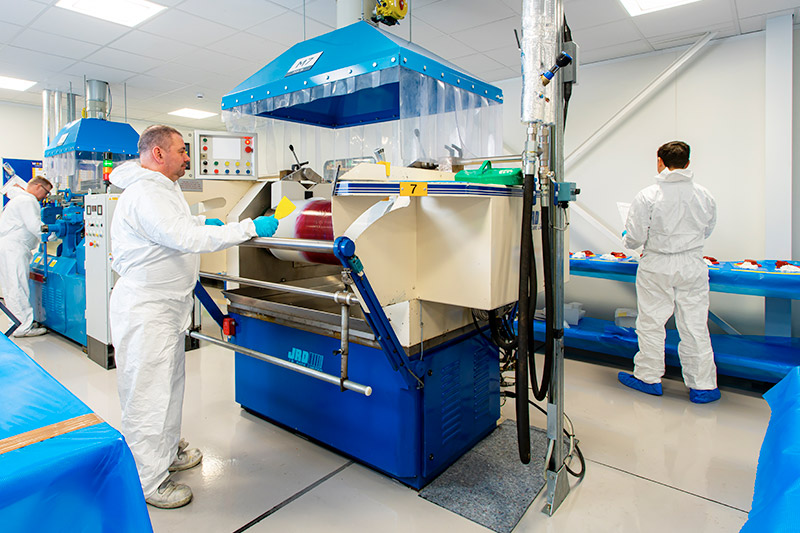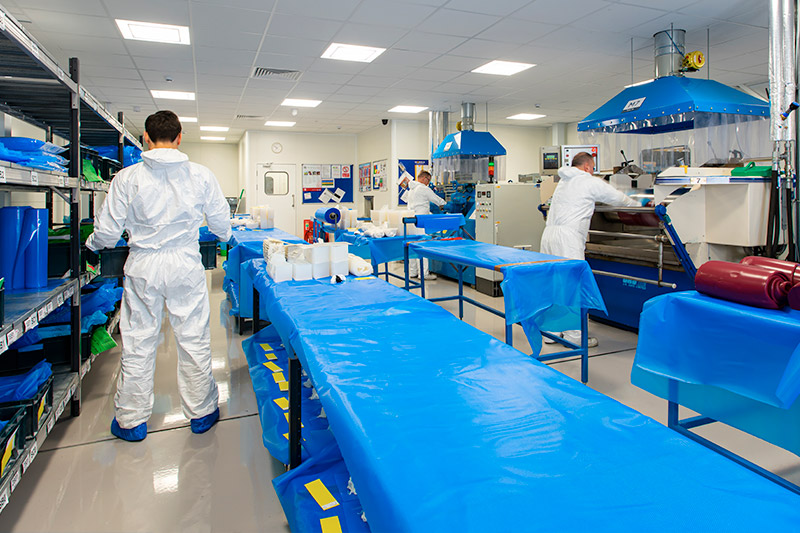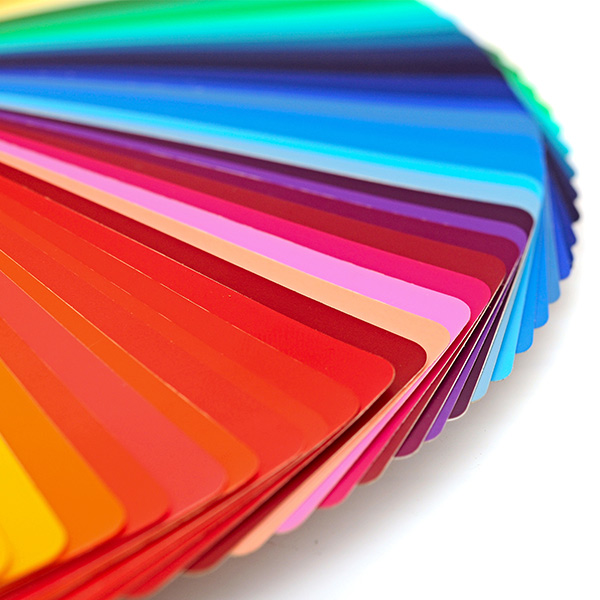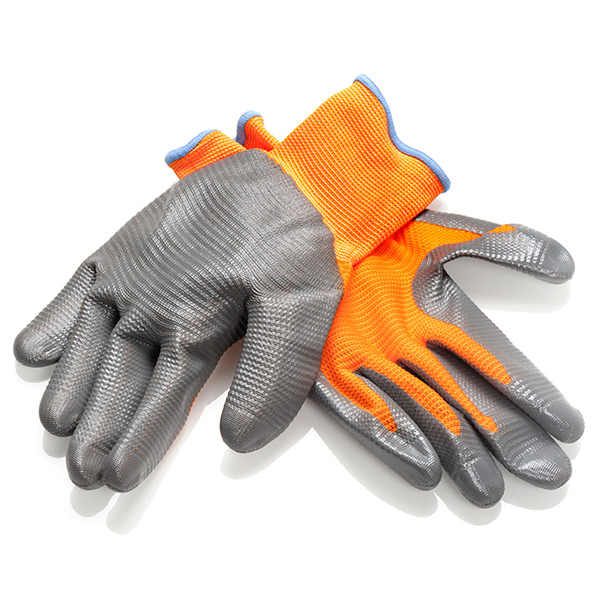Specialist Facilities
Whilst all compounding at Clwyd Compounders is carried out to an industry leading standard, we also have specialist facilities that include; specialist equipment in positive pressure, clean room type environments for mixing of; pharma type materials, FDA compliant compounds, transparent and translucent mixes. As well as a dedicated room for perfluoro elastomers (FFKM). Some of this equipment allows us to create novel compounds by incorporating specialist fillers to give properties such as: luminescence, anti-microbial, ultra-conductivity, light weighting and thermally dissipative.


Lightweight / Low-density
Due to recent developments in filler technology we are now able to offer lightweight compounds that have a lower density than traditional compounds.
The fillers are solid, spherical and have a very high crush strength, they offer significant advantages over traditional sponge materials when the moulded parts are used in compression. The compressive force is distributed evenly across the spheres and the bulk modulus of the material is mostly maintained. The result is a lighter part with similar performance characteristics in compression.

Conductive Fillers for Rubber Compounds
We have evaluated several raw materials that can be used to increase the electrical and thermal conductivity of rubber compounds.
The electrical conductivity can be increased by introducing conductive fillers to the matrix that form a network that facilitates electron transfer in the material. There are several options available that we could recommend depending on the requirements of the compound and the desired level of electrical resistivity (ohm.sq, ohm.cm). These range from standard conductive carbon blacks to much more novel materials such as graphene and carbon nanotubes.

Coloured Compounds
Clwyd Compounders understands how crucial obtaining the correct colour is for certain parts. We will work alongside you, our customer, to ensure we achieve the exact coloured compound you require. We use our in-house spectrophotometer to measure the L*a*b values to ensure batch to batch consistency.
We can provide compound matched to a RAL and Pantone colour references or to a sample that you have. We are able to ensure that the physical properties and performance of the compound won’t be adversely affected by having a coloured compound. We have a vast range of pigments which also includes a series of FDA approved pigments.
The application of the final part will also need to be considered to ensure we supply a compound that will have the highest levels of durability possible. If, for example the compound is likely to come into contact with direct sunlight, inorganic pigments can be chosen along with a suitable polymer base such as EPDM to suit your needs. Our skilled technologists will be able to provide you with a custom formulation to take into account all aspects of your requirements and choose the best all round formulation.

Food & Pharmaceutical
Clwyd Compounders have access to a vast range of raw materials that are specially certified for use in food and medical manufacturing and packaging. Rubber compounds which are designed to come into contact with food and drug applications will need to be formulated with FDA compliant raw materials to FDA 21 CFR 177.2600 Indirect Food Additives: Polymers; Subpart C – Substances for use only as components of articles intended for repeated use. All of these compounds will be made in accordance with EN 1935:2004. We also have experience of compounding USP Class VI compounds which can be used in the pharmaceutical industry.
Compounds which are formulated using only raw materials from the permissible list can be used for applications involving dry foodstuffs. For applications which involve aqueous or fatty foodstuffs, a series of extraction tests, often on the finished part, will need to be performed at an FDA accredited test laboratory.
Whilst Clwyd Compounders is not an FDA accredited test laboratory, we are able to perform indicative tests to give our customers confidence that the compound they purchase from us is likely to pass such extraction tests.
Another requirement for rubber compounds in the food and medical industry is the ability to identify and remove any rubber contamination. We can supply metal detectable compound that also complies with FDA, to ensure that early detection and removal can be made to ensure any potential contamination doesn’t reach the supply chain.

Flame Retardant Compounds
A range of low smoke, low toxicity (LSLT) halogen free compounds have been developed by our experienced technical team for individual applications, to ensure the material performance and processability are optimised for each application.
Achieving the balance between the level of flame resistance required and material performance is vital in ensuring the compound is not only suitable for its application but also superior in terms of processability and performance.
We are able to offer a range of customisable flame-retardant products for all industries which are readily available. We have developed compounds suitable for marine and aerospace applications in a variety of polymer types which can be provided upon request. If you have an application you believe could benefit from one of our many flame-retardant products, then please contact us for more information.
We can also supply silicone compounds that contain halogen-free flame-retardant additives. The additives function by inhibiting flame propagation and improving ash cohesion, this improves the flame retardancy of the compound.
If you have an application you believe could benefit from one of our many flame-retardant products, then please refer to our technical paper or contact us for more information

RF Shielding
We have developed a range of silicone and fluorosilicone compounds designed to be effective at shielding electronic equipment from electromagnetic interference (EMI). Radio frequency electromagnetic radiation between the ranges 3 kHz to 300 GHz can lead to failure of electronic equipment.
With advances in technology and greater demand for electronic devices there are increasing numbers of EMI sources. Demand for these highly conductive elastomers has increased as the need to ensure safety and reliability in electronic equipment becomes a priority.
N.B. All shielding compounds are currently tan coloured; other colours can be made on request.
Please browse below the available compounds to military specification; however we can develop to your specific requirements. Contact us.
> VMQ 65A Compliant to MIL-83528C Type A
> VMQ 65A Compliant to MIL-83528C Type B
> FVMQ 75A Compliant to MIL-83528C Type C
> FVMQ 70A Compliant to MIL-83528C Type D
> VMQ 80A Compliant to MIL-83528C Type H

Fibre Reinforced
We have developed a range of technical fibre-reinforced compounds which offer high tensile strength at low strain; combined with low compound viscosity for easy processing. Our fibre-filled compounds are designed for use in in applications where the part must be able to withstand extrusion at high differential pressures; for example, anti-extrusion seals.
Our extensive range of fibre-filled compounds include polychloroprene, nitrile-butadiene rubber (NBR), hydrogenated nitrile-butadiene rubber (HNBR), fluoroelastomers (FKM) and Aflas compounds, which range in hardness from 70 IRHD / Shore A to 65 Shore D.
To find out more about technical fibres and how their use within compounds can enhance performance in your required application, please read our fibre reinforced technical paper.

Anti-Static
Anti-static plasticisers can be used in certain compounds to increase the electrical conductivity on the surface of the part.
Rubbers are inherently non-conductive and are very effective thermal insulators due to their amorphous molecular structure. To increase the thermal conductivity a high level of specialist filler must be added to the compound to facilitate the transfer of phonons and/or electrons through the material. There are several options available that depend on the requirements of the compound and whether electrical insulation properties are important.
We have successfully achieved values >1 W/mK through plane (z-direction) with in plane values (x-y direction) likely much higher.


Supplying High Quality Elastomeric
Compounds and Technical Expertise
to meet rigorous customer requirements
and new industry standards

